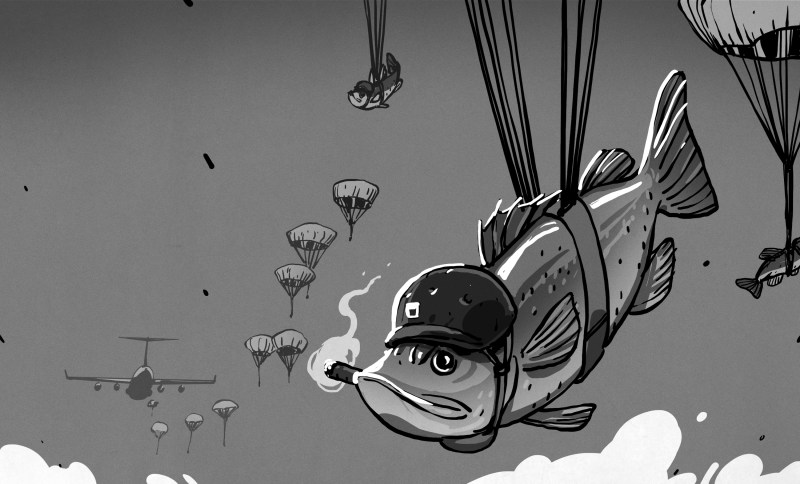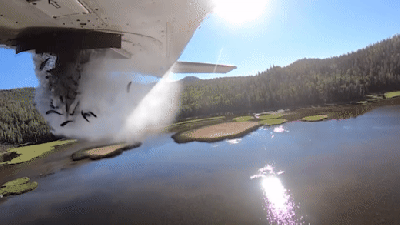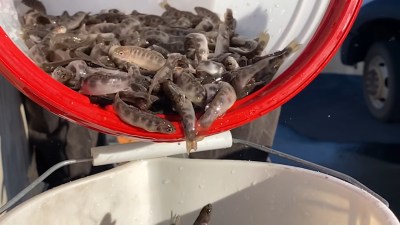
Utah is a place that features a wonderful and varied wilderness. Its mountainous terrain is home to many valleys, ponds, and streams. They’re a particular favorite of recreational anglers who visit the region for the great fishing. Oftentimes, however, these areas are fished out by visitors and need to be restocked. Other environmental factors also come into play in reducing populations, too.

When this happens in some areas, it’s as simple as driving up a truck full of water and fish and dumping them into the lake. The problem is that many of these lakes and streams are difficult to access by foot or by road. Believe it or not, the most practical method found to deal with the problem thus far is dropping in live fish by air. Here’s how it all goes down.
Live Cargo
Typically, the fish dropped into these remote watercourses are quite young, and on the order of 1-3″ long. The fish are specifically raised to later be fished, and are also usually sterile, making it easier for Utah’s Division of Wildlife Resources to manage numbers. When it comes time to restock remote lakes, waterbombing planes are pumped full of water and loaded up with fish.

The small, lightweight fish tend to flutter down with the water, and survival rates are very high. Officials estimate that 95-99% of the fish dropped survive the fall into the water. While it sounds stressful, they say it can be less harmful to the fish than comparable road journeys. In these conditions, it can be difficult to maintain good oxygen levels for the fish for the long journey to the water.
The practice has been carried out for quite some time (Cached). Before the airdrop procedure became standard in the 1950s, fish were often loaded into old milk cans and carried up into the mountains on horseback. Other methods are still used depending on the area to be serviced. Buckets may be used, or backpacks filled with water and fish can be carried by hiking teams deep into the wilderness. In what Utah DWR biologist Matt McKell calls “extreme fish stocking”, ATVs and dirt bikes have been used to access remote waters to reload them with fish.
Small general aviation planes are used for the purpose, not dissimilar to those used for aerial waterbombing of wildfires. The planes can deliver 35,000 fish on a single flight, far eclipsing what can easily be achieved by other methods. The fish chosen for airdropping are typically those favored by anglers that are also well suited to the Utah environment. Fish raised for the purpose include rainbow trout, cutthroat trout, brook trout, tiger trout, splake and Arctic grayling.
Restocking as Environmental Control
Controlling the fish stocks is key to avoiding environmental problems in the lakes of Utah. Keeping native species happy and watercourses healthy requires careful management of both the areas themselves and the regulations surrounding them. This year, the Utah DWR has faced particular issues with high temperatures and low water levels as a drought rages on in the summer. It’s recently raised fishing quotas — twice this month actually — to try to deal with the problem. Higher temperature waters store less oxygen, and low water levels exacerbate the problems. Fish numbers have to be reduced in turn, lest there be disease or mass dieoffs which could cause a bigger problem for authorities to clean up later.
While the Utah DWR may have its work cut out for it this summer, it’s well experienced and well armed to deal with the issues. Bombing lakes with a cargo of live fish might seem a little ridiculous on the face of it, but the procedure has over 70 years of good results to back up its effectiveness and it does the job well. Hopefully when water levels rise in the winter, the agency is able to resume topping those lakes up and keeping everything humming along smoothly.
0 Commentaires